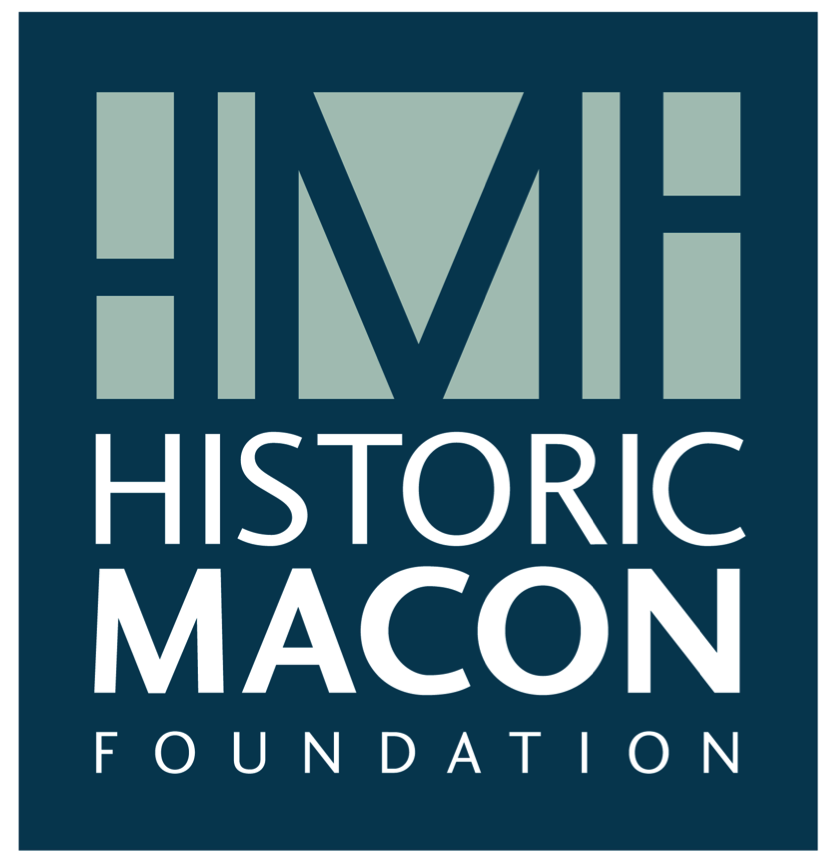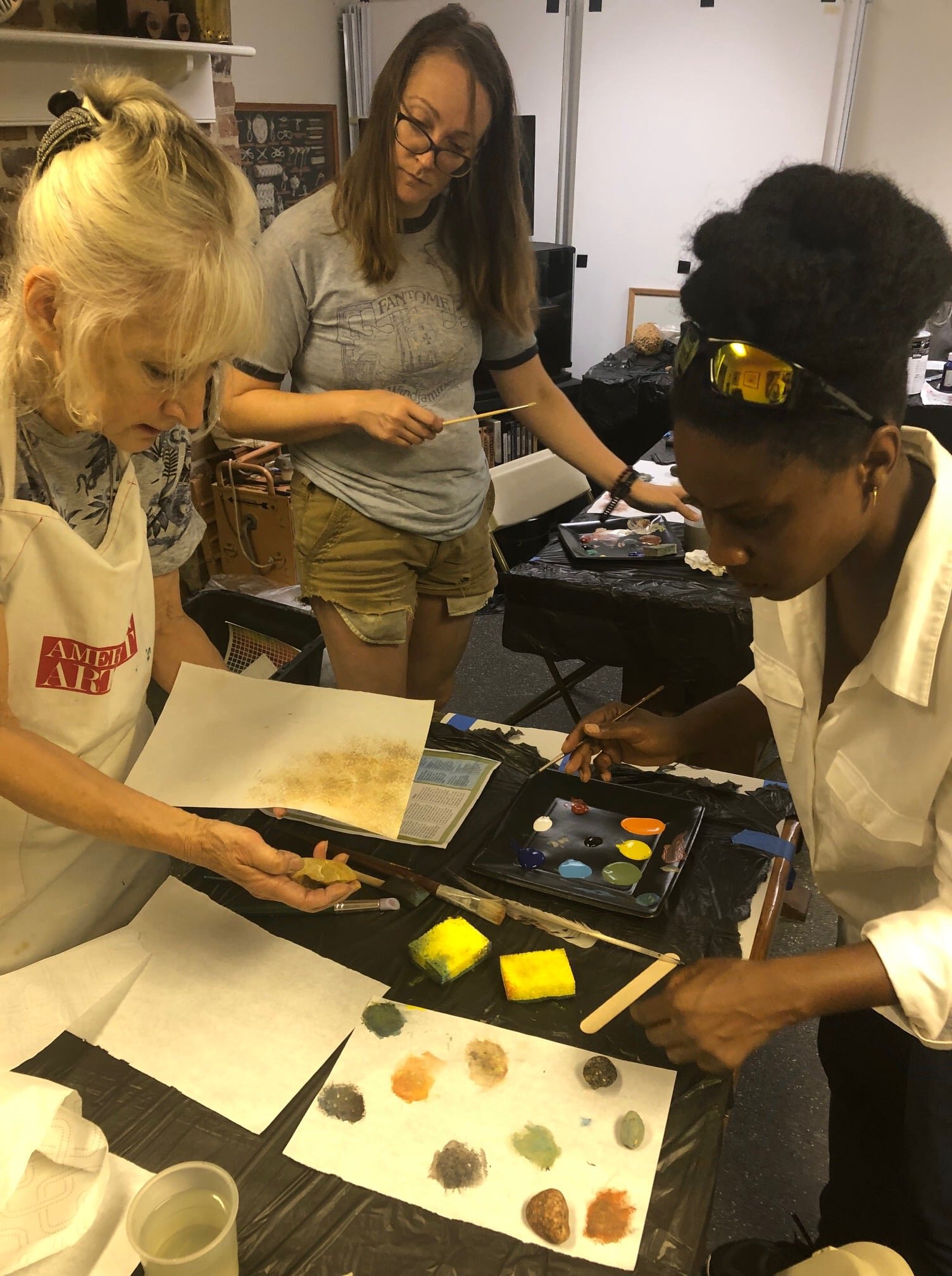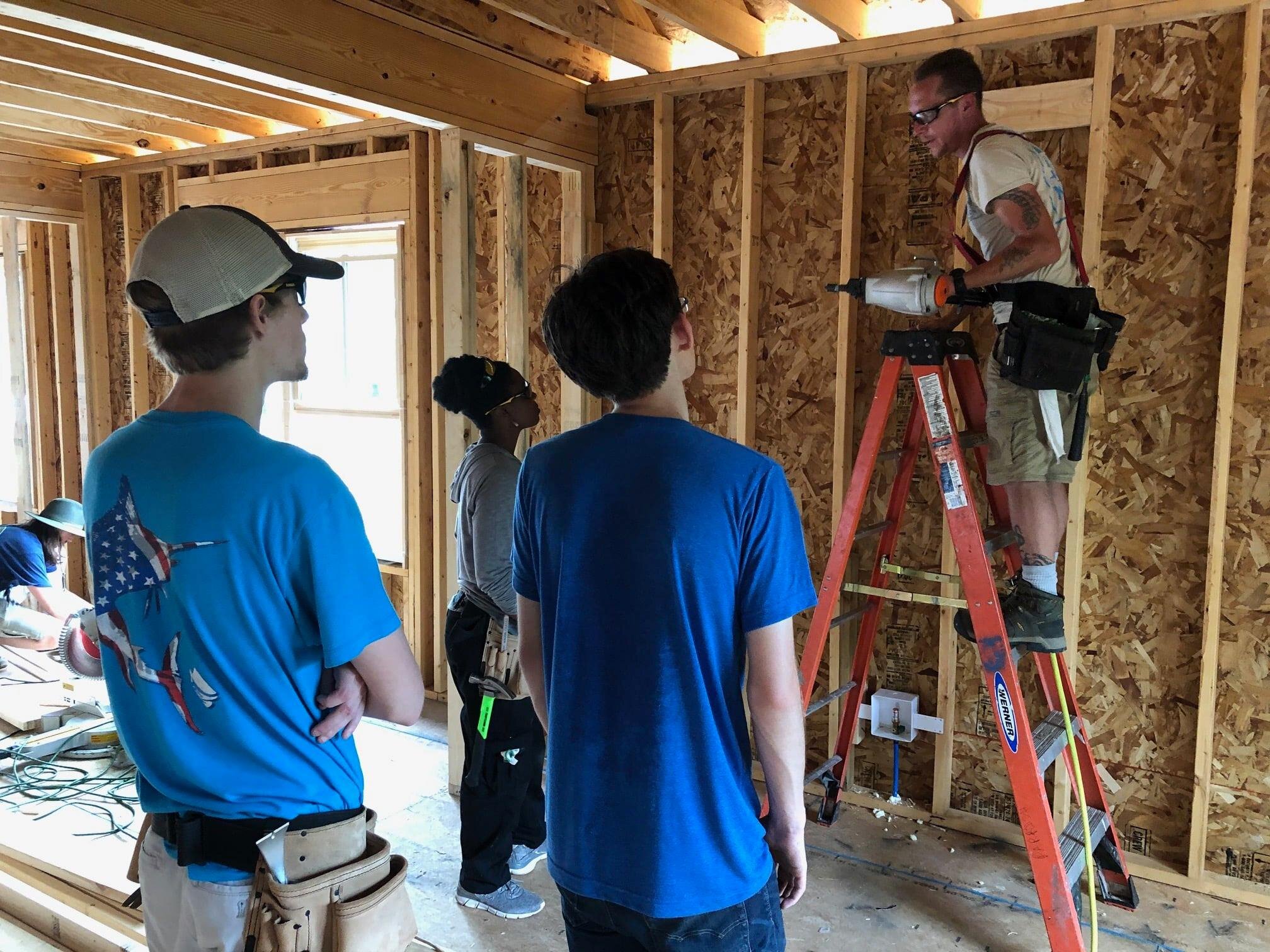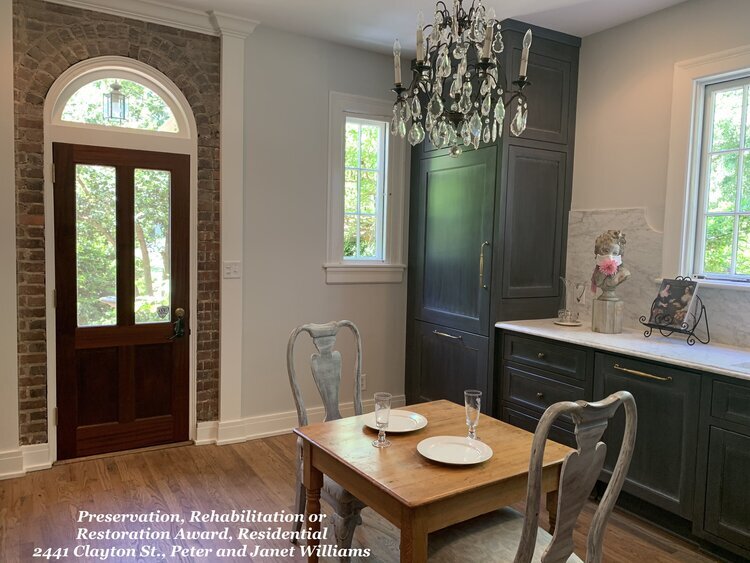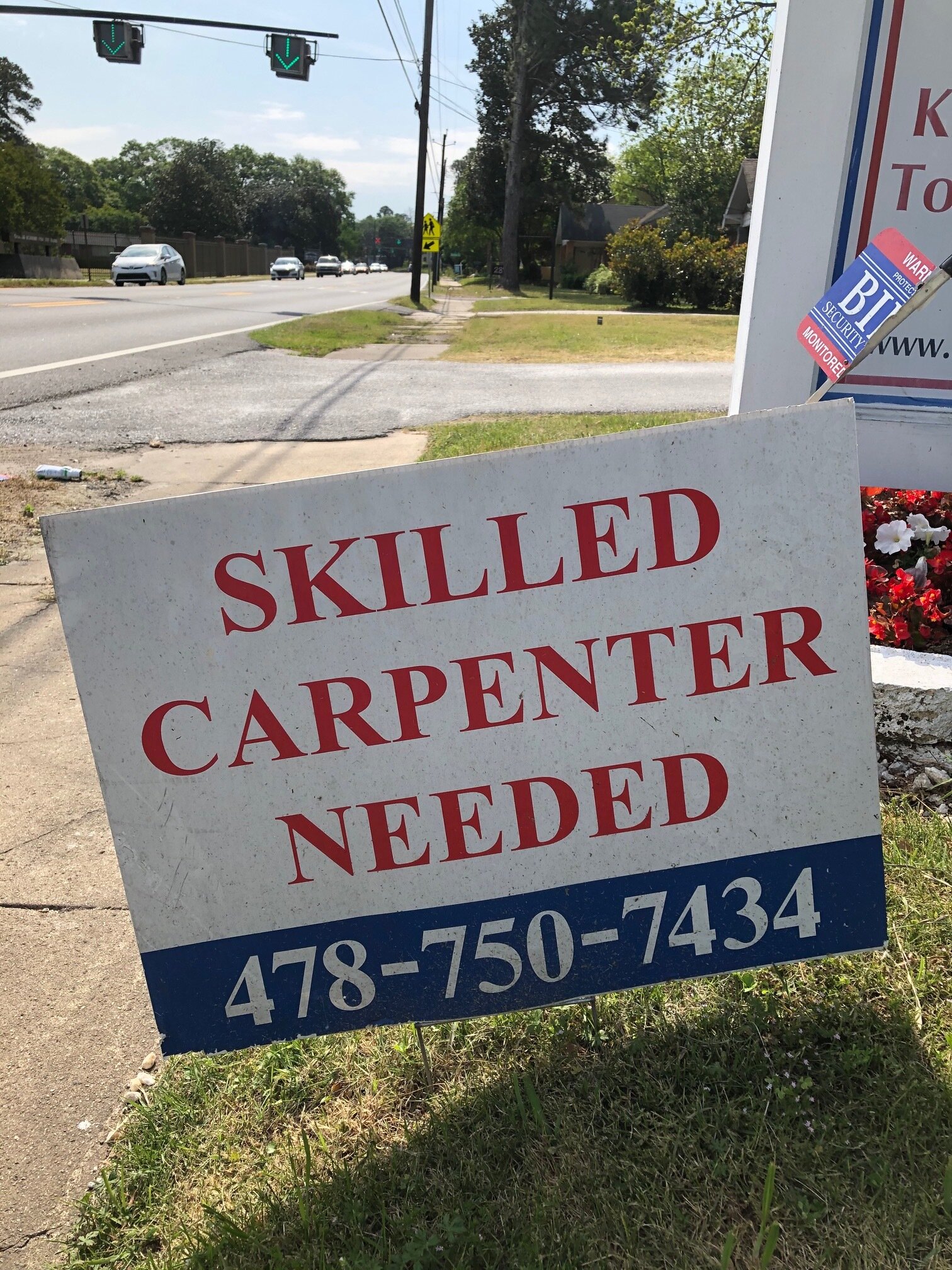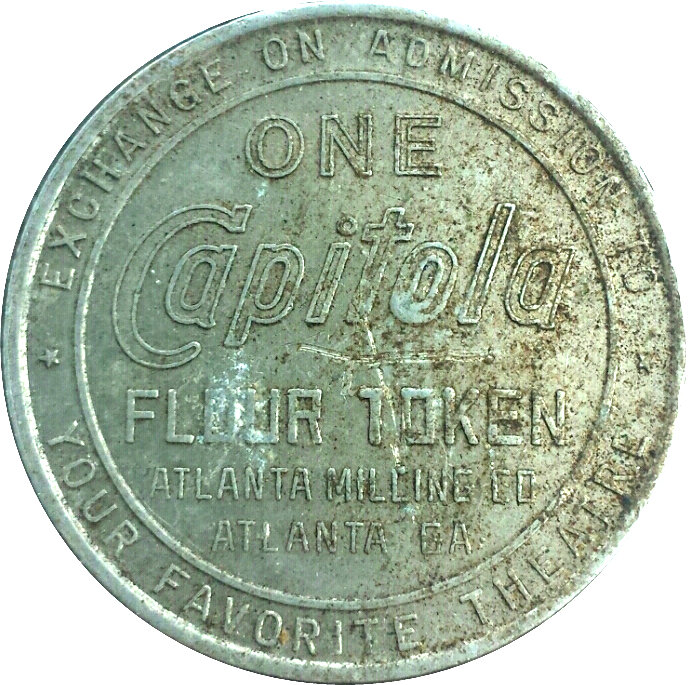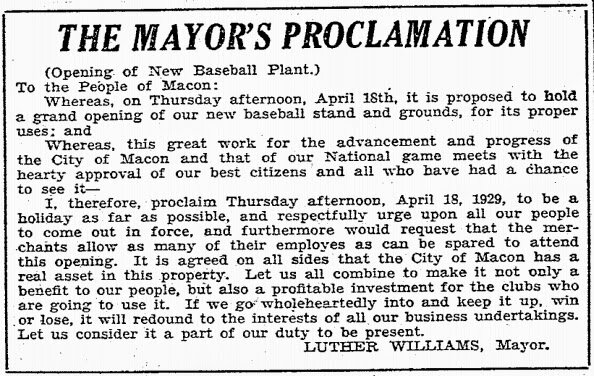There’s something reassuring in watching Roscoe Ross work.
The knowing eye. The strong, steady hands. The rhythm of his movement.
His way is an old way. It pays no mind to the TikTok world we live in, with its five-second attention span and fixation on fame.
You could say his trade — laying bricks — is biblical: “And you, oh son of man, take a brick and lay it before you, and portray upon it a city,” the Good Book says.
At sunrise one recent morning at Rose Hill Cemetery, Ross was getting the texture of concrete just right before he began troweling. He was adding a second thin layer to protect a row of old, decaying bricks at a private burial plot.
You’ll find him at Rose Hill on many days, even on weekends. (“You have to take advantage of your sunny days. I’d prefer to be somewhere catching fish.”)
Last summer, after someone’s car or truck battered the arch at the cemetery’s College Street entrance, it was Ross who took on the restoration. He cleared away the damage, then set about to repair the arch, brick by brick, layer by layer.
If you’ve ever visited the burial site of Allman Brothers Band members near the main entrance to Rose Hill, you’ve seen more of his work. He laid all the bricks there, bringing the shrine to life.
The 68-year-old learned from the best. His dad, Oscar Ross Sr., was a master brick mason for more than 65 years. (So was one of his uncles.) Between the elder Ross and his son, they have 138 years of “union work” between them.
It’s a tie that binds. Sometimes on a job he pulls out one of his daddy’s tools, maybe his trowel. It keeps him connected.
Roscoe Ross was recently honored as one of Historic Macon’s 2024 Preservation Award winners. He won the Jenny Thurston Award, which salutes a lifetime of historic preservation work.
His father saw to it that young Roscoe got a head start on learning the trade. Many a day when the younger Ross got home from the old Duresville Elementary School on Millerfield Road, he would start stacking bricks in the barn, learning different patterns — running bond, jack-on-jack, herringbone — that he’d use on the job one day.
His father would come home from a long day of work, greet his wife, Amanda, then inspect what he had assigned his son to do, correcting him where he needed to.
“When other kids were playing with Play-Doh, I was playing with bricks,” he said with a laugh.
During the summer, he also helped his grandfather, Benjamin Collins, on his Donnan Road farm. Much of Collins’ 145 acres was devoted to fruit orchards — peaches, apples, grapes — but there were peas, beans, corn and plenty more in the garden to harvest in the summer heat.
“I was his right-hand man till I was 10,” Ross said. “Once I got to 10, they put a trowel in my hand.”
During his days at Northeast High School, he got a part-time job at a Piggly-Wiggly store, stocking shelves and carrying out customers’ groceries. Working at the store also meant he got a Social Security card, which he needed to get into the union.
There were two brick-mason unions back in those days: the Local No. 4, for Black masons, located above the H&H restaurant, and the Local No. 17, for white brick masons. Once you were accepted into a union, you had five years to get certified as a journeyman brick mason.
In 1973, the year he graduated from Northeast, he began twice-a-week classes in the evening, learning everything the program offered, including how to read blueprints.
“You set your own pace,” Ross said. He was able to finish that training in three years because of all that practice in his youth. (He’ll get his 50-year union card soon.)
“All of that training I did back then for my dad put me years ahead of everybody else,” he said. “Dad was getting me ready for an apprenticeship.”
In short order, “I was a full-fledged bricklayer,” he said. Others would have to get on-the-job training.
‘YOU ONLY GET ONE SHOT’
Bartholomew Duhart
He worked for his father about 25 years, but he also worked for other contractors in town, including Bartholomew Duhart, whose creations across the Unionville neighborhood in particular are legendary.
Ross would travel out of town on occasion — even to work on the Buckhead home of Capricorn Records co-founder Phil Walden — but he preferred being home with his wife, Debra, and seeing his son, Jonathan, who now lives near Atlanta. (Ask him about the two-year British Petroleum project east of Chicago, where more than 200 brick masons lined the inside of 8-foot-tall pipes with fire bricks for more than a quarter mile.)
Ross quickly made a name for himself. People would call his father and ask if Ross could help with their brick or stone projects.
He’s worked on four different homes for Macon attorney Frank Horne, everything from walkways to fireplaces. (Horne also knew Ross’ father.)
The walkway in front of Frank Horne’s home.
“When people are out walking the dog or pushing a baby stroller, they stop in front of my house (on Albermarle Place) all the time and ask, “Who did this brickwork,” Horne said. “It is absolutely amazing.
“Everybody knows he’s the best. There’s nobody at his level.”
Maryel Battin, left.
In time Ross met Maryel Battin, who led the Historic Macon Foundation for 17 years. After he did some work for her, she saw his talent and asked him to help with restoration and historic preservation projects whenever he could.
Now, decades later, you’ll find that work all over town. A walkway (and reset stone) at Washington Park. Brick walls outside Mercer Law School. At the Robert E. Lee Building, formerly the Professional Building and home to WIBB studio. Inside and outside Mount de Sales High School. The Cannonball House. The old warehouse where 41 NBC is located.
And soon at the Hay House, where it looks like a delivery vehicle hit one of the stately columns near the driveway.
Ross’ work on the Rose Hill arch.
On a job, he knows the most important thing he can do. It’s pretty simple. “As you go, just stand back and look at your work,” he said. “Pick out your flaws and straighten ’em out while you can.”
In his line of work, mistakes are easy to spot.
“Brick work has always been under everybody’s eye to where it has to be perfect — straight joints, straight head joints, the whole nine yards,” he said. “You may not know anything about brick work, but you can look to see if it’s straight or if it’s pure ugly. You know what I mean?”
In its own way, it is a work of art. And you don’t get second chances.
“It’s like painting a Picasso,” he said. “You only get one shot to do this. You can’t come back tomorrow.”
When the Rose Hill archway was damaged last summer, there were sentiments to just tear it down and rebuild. But Ross knew he could save it, and the results have drawn praise far and wide. He used 8-inch bricks — almost 90 years old — for the project that had been set aside for such restorations. (Using incompatible materials can cause damage to historic masonry.)
He credits the foresight of consultant Bill Causey in collecting — and saving — old bricks, cobblestone, marble and more that are invaluable in such preservation projects. It was crucial in saving the old archway. Ross used hundreds of them.
Rose Hill, which opened in 1840, holds a special place for Ross. He has a real sense of history — and pride — about Macon too, even talking at one point about how important it was to Macon’s growth that the city had two big brick companies: Cherokee Brick, founded in 1877, and Burns Brick, founded in 1936.
“Here, Rose Hill, you can’t find a better place to do masonry surgery,” he said. “It’s needed in here. You can see where the families preserved nice, beautiful plots, but over the years of neglect the walls are collapsing. You can go in and surgically restore them. … Whatever the material is, though, we have to match it. That’s what makes it so exciting.”
Historic preservation, he says, “is the heart of the city, … but it takes a lot of effort.”
Causey, who worked for decades with Macon’s Engineering and Public Works departments, now oversees work at Rose Hill. He has turned to Ross time and time again for repairs that require an expert’s touch.
Simply put, Ross’ restoration work on walls, steps and more “is a beauty to behold,” he said.
“He is truly a master craftsman, and upon his departure from this honorable trade, there will be a huge void, unlikely to be filled in today’s construction industry,” Causey said.
“There will always be bricklayers,” he said, “but there will never be another master craftsman like Roscoe Ross.”
